Sleep. You do it every day and you hardly even think about it when everything is working as it should. But when you can’t sleep right? Everything can start falling apart.
Sleep is critical for all of the essential functions of your body and brain. Heart function, breathing, digestion, hormones, nerves, brain function, muscles, toxin removal, and so much more are all affected when your body is not getting the sleep that it needs. So many things can get in the way of restorative sleep. Restless legs, snoring, disrupted breathing, sleep deprivation, and even getting too much sleep can cause various problems.
This guide takes a look at various types of sleep disorders and the impact they have. Sleep disorders are divided into six categories: insomnia, sleep-related breathing disorders, hypersomnolence, sleep-wake disorders, parasomnias, and sleep-related movement disorders.
Insomnia
Simply put, insomnia is the inability to sleep well and feel restored in the morning. It is not necessarily related to how many hours of sleep a person gets at night. Insomnia has more to do with the fact that opportunity and circumstances are available for sleep, but quality sleep does not happen. This then results in some form of impairment during the day, usually a combination of mental, physical, and emotional struggles.
Insomnia is the most common sleep disorder reported today, affecting approximately half of adults occasionally, and at least 10% chronically. Women are more likely than men to experience insomnia and adults who have children are more likely to report insomnia than those who do not have children.
People with insomnia may have a difficult time falling asleep at the beginning of the night, but not always. Sometimes insomniacs fall asleep at night perfectly well, but then awake in the middle of the night and have trouble going back to sleep. People who wake up very early in the morning (earlier than planned) and cannot go back to sleep may also be categorized as having insomnia.
Most people at some time or another throughout their lives experience Acute Insomnia. This is a short term version of sleeplessness that may last between one night and three weeks. Chronic Insomnia lasts for more than three weeks and has occurrences of three or more nights per week for the long term.
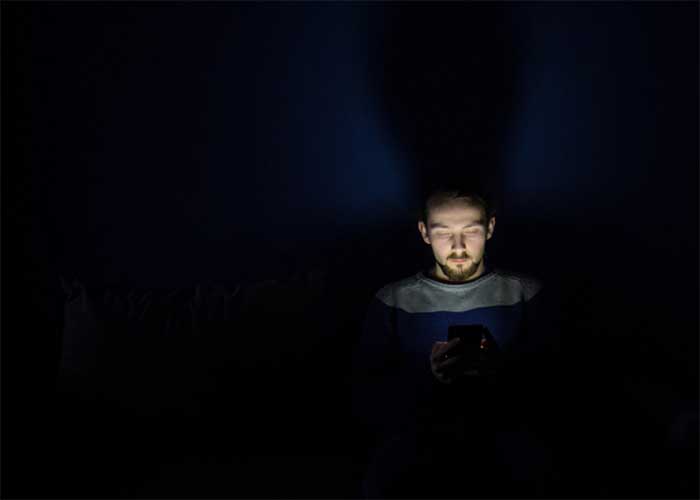
Symptoms and Signs of Insomnia
A combination of some or all of these signs and symptoms will likely indicate that person has insomnia:
- Excessive daytime sleepiness
- Feeling that sleep is non-restorative
- Lack of energy and general fatigue
- Difficulty with concentration
- Memory troubles and forgetfulness
- Decreased work or school performance
- Accidents while driving or at work
- Depression
- Mood disturbances such as aggression, irritability, impulsive behavior
- Struggles with professional or personal relationships
- Quality of life that is decreased
Causes of Insomnia
Primary insomnia does not have another condition that causes it. However, secondary insomnia can be caused by a variety of issues that results in the inability to gain restorative sleep.
- Digestive and gastrointestinal issues such as reflux
- Arthritis pain
- Low back pain
- Nasal/sinus allergies
- Asthma or other breathing problems
- Parkinson’s disease or other neurological conditions
- Hyperthyroidism, hypothyroidism or other endocrine problems
- Medications taken for various health issues
- Underlying sleep disorders such as restless leg syndrome or sleep apnea
- Psychological issues such as depression
- Stress, anxiety, or worry
- Sleep interruptions such as shift work or jet lag
- Physical illness or discomfort
- Factors in the sleep environment such as light, noise, or temperature
Treatments for Insomnia
Options for insomnia treatments will vary depending on the cause. Sometimes eliminating the underlying cause is simple, such as a change in medication or developing healthier sleep hygiene habits. Sometimes a treatment plan for chronic insomnia requires care from a medical professional.
Doctors are likely to approach treatment for insomnia using Cognitive Behavioral Therapy approaches first. This may include changes in lifestyle habits (such as stopping smoking or losing weight), practicing meditation, keeping a regular sleep schedule, or seeking counseling to reduce stress and anxiety. Natural sleep agents such as lavender essential oils applied topically may be useful, as well as using light therapy to naturally produce melatonin.
Because of the severe side effects, sleep medications are typically only used for insomnia treatment in short term situations. Benzodiazepine hypnotics, non-benzodiazepine hypnotics, and melatonin receptor agonists may be discussed with your physician.
If your insomnia is difficult to treat, your doctor may request a sleep study to determine if there is an underlying cause such as sleep apnea, narcolepsy, or restless leg syndrome.
Sleep Related Breathing Disorders
Although the body should naturally continue to breathe normally during sleep, many times this is not the case. Sleep related breathing disorders should be taken very seriously as they can have a serious impact on the health.
Obstructive Sleep Apnea
Adult Obstructive Sleep Apnea
A fairly common sleeping disorder in the United States is obstructive sleep apnea. This breathing disorder is caused by physical blockage of the airways during sleep and can have a variety of causes. Sleep Apnea is an extremely serious condition that is often associated with annoying snoring, but can have dire consequences. Untreated sleep apnea can lead to a variety of serious health problems such as heart failure, diabetes, high blood pressure, gaining weight, acid reflux, dangerous accidents, and even premature death.
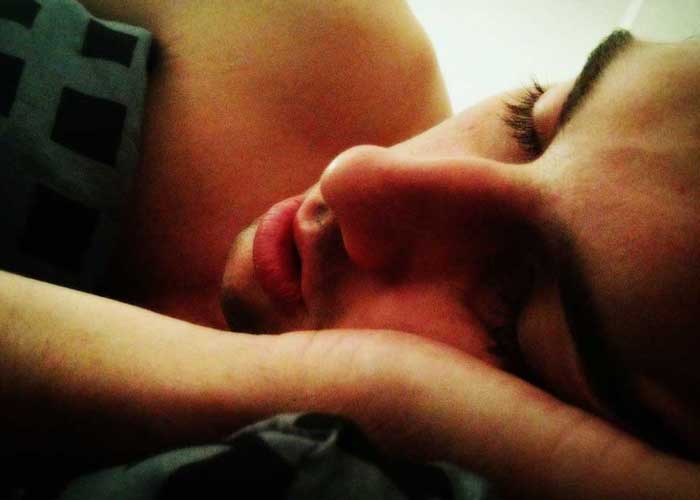
Symptoms of Obstructive Sleep Apnea include:
- Loud snoring
- Excessive sleepiness during the day
- Waking up in the morning with a very dry mouth or sore throat
- Headaches in the morning
- Observed episodes of breathing stopping during sleep
- Waking up with a sensation of choking or gasping for air
- Difficulty with concentration or memory
- Relationship struggles
- Irritability and other mood changes
- Overall fatigue
- Falling asleep during activity such as driving
- Decreased sex drive
- High blood pressure
Causes of Obstructive Sleep Apnea
In order for OSA to be eliminated, the cause must be understood. A sleep study is usually the way that a doctor diagnoses OSA and determines the cause as well as intended treatment.
Common causes for airway blockages in sleep apnea include:
- Being overweight or obese
- Nasal blockage from allergies or deviated septum
- Narrow airway
- Enlarged tongue
- Smoking (reduces airway size through inflammation)
- Asthma
- Frequent use of alcohol (relaxes the throat muscles during sleep)
Treatment for Obstructive Sleep Apnea
OSA treatment will have everything to do with what is causing it. Many times, natural lifestyle changes will be recommended such as losing weight or changing sleep positions. Continuous Positive Airway Pressure (CPAP) machines are commonly used to control breathing during sleep. In cases where the obstruction to breathing is a physical complication, such as a deviated septum, surgery may be required.
Pediatric Obstructive Sleep Apnea
Symptoms of obstructive sleep apnea in children are very much the same as adults. However, the most common cause of pediatric OSA is enlarged or swollen adenoids or tonsils which block the airways and disturb sleep breathing. This is often treated with surgery to remove the adenoids or tonsils. Rarely, childhood OSA may be caused by obesity or allergies and treatment will be dependent upon eliminating the cause.
Central Sleep Apnea
Although the results of Central Sleep Apnea are the same as OSA in that breathing does not continue as it should during sleep, the cause is very different. Breathing periodically stops and starts, resulting in a lack of oxygen and potentially severe health problems. Rather than resulting from a physical blockage of the airways, central sleep apnea is caused by a neurological problem in which the brain neglects to tell the body to breathe while it is sleeping.
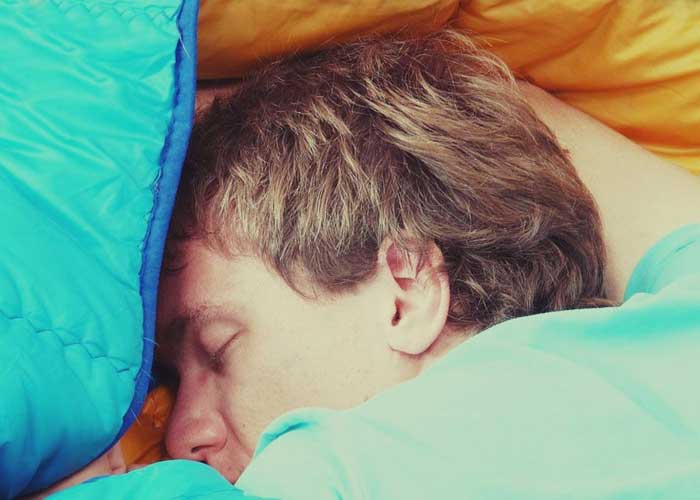
Cheyne-Stokes Breathing CSA
This type of sleep apnea is commonly related to stroke and congestive heart failure. In this disorder, breathing becomes progressively deeper and faster, and then gradually decreases so much that it temporarily stops. Common treatment is Continuous Positive Airway Pressure (CPAP) machine.
High Altitude CSA
Some people’s bodies have trouble adjusting when they change from a normal altitude to high altitude. The air is “thinner” (containing less oxygen) and this can result central sleep apnea in some people. The body tries to breathe harder in order to gain more oxygen, but then enters into a pattern of under-breathing. Relocation to lower altitudes typically solves that problem, but CPAP breathing treatment may help as well.
Medication or Substance CSA
Some medications and drugs can cause the brain to go into a state that creates irregular breathing. Opioids such as morphine, oxycodone, and codeine are particularly likely to cause CSA. Stopping the use of these medications is typically indicated.
Complex Sleep Apnea
Some people who have obstructive sleep apnea and are treated with CPAP breathing machines may eventually develop a form of central sleep apnea as well. When these two conditions are combined, it is referred to as complex sleep apnea. Treatment typically includes lifestyle changes and/or CPAP machine usage but requires a more careful observation by medical professionals to prevent the condition from getting worse.
Other Breathing Disorders
Various other sleep breathing disorders exist that can either cause people to breathe too much or too little. Sleep-Related Hypoventilation Disorders (SRHS) mean that the person is breathing abnormally which increases the carbon dioxide levels and reduces the blood oxygen levels. This can be a primary disorder (often caused by obesity) or related to another medical condition such as Chronic Obstructive Pulmonary Disease (COPD), emphysema, or other neurologic conditions.
Treatment for such breathing disorders will depend on treatment of the underlying causes as well as possible lifestyle changes. Losing weight, exercising, and changing sleep positions may be recommended. The use of a Continuous Positive Airway Pressure (CPAP) machine may be indicated to assist with breathing during sleep.
Central Hypersomnolence Disorders
Many people think of sleeping disorders as not getting enough sleep. But actually, some sleeping disorders prompt a person to sleep too much, or to sleep at the wrong times. These are referred to as hypersomnolence sleeping disorders.
Narcolepsy
In this neurological disorder, the brain is unable to control the sleep-wake cycle as it should. Severe daytime sleepiness as well as falling asleep at unexpected times during the day are the main signs of this disorder. People who have narcolepsy do not sleep more than the average person, but their brains cannot seem to regulate the times that they fall asleep.
People with narcolepsy do not have normal buffers between falling asleep and entering REM sleep. Instead, their sleep cycles are out of sync and they experience fragmented forms of REM sleep involuntarily during normal waking hours.
Scientists are not quite clear on the causes of narcolepsy, but it may be related to an autoimmune reaction. Treatment for narcolepsy may include medications such as stimulants or anti-depressants. Lifestyle changes such as keeping a sleep schedule, engaging in regular exercise, and avoiding alcohol or caffeine may help.
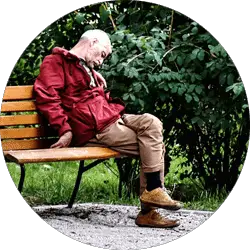
Kleine-Levin Syndrome
Sometimes referred to “Sleeping Beauty Syndrome”, Kleine-Levin Syndrome causes people to sleep up to 23 hours per day for several weeks at a time. During the short hours that people with this condition are awake, they exhibit unusual behavior such as binge eating, confusion, hallucinations, apathy, heightened libido, and compulsive behaviors. Breaks in the condition can last up to a year where normal sleep patterns and behaviors exist. No one is quite sure what the cause of this neurological condition is. While some women develop this disorder, it mostly affects males around the age of 15 and can last for up to eight years or more.
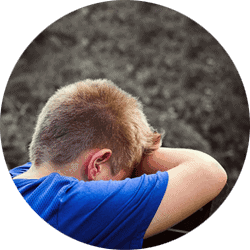
Idiopathic Hypersomnia
In these conditions, the person sleeps excessively but still feels tired during the day. People with hypersomnia may sleep 10-16 or even more hours per night, plus naps during the day. Symptoms of this disorder include:
- Excessive sleepiness and fatigue during the day
- Difficulty waking up in the morning
- Feeling of drunkenness (sleep inertia) or impaired state upon waking up
- Taking long naps and waking feeling more tired
- Cognitive impairment such as memory problems, concentration struggles and short attention span
This rare disorder can be difficult to diagnose as it can manifest itself in similar ways to other sleeping disorders. An overnight sleep study (polysomnogram) will likely be needed to assess the situation and diagnose the problem. Treatment may include proper sleep hygiene training and possibly prescription medications, such as the stimulants used to treat narcolepsy. Medication is often useful temporarily but long-term use may make patients resistant to treatment.
Circadian Rhythm Sleep-Wake Disorders
The circadian rhythm is the system in your body that regulates the amount of time you spend sleeping and awake. The standard norm for adult humans around the globe is to sleep approximate 8 hours per night (from 11pm to 7am) and stay awake for the rest of the day. Some variations in this rhythm are normal, but getting too far away from it can cause serious problems with sleep health.
Some people struggle with sleep-wake problems during the winter time, particularly in northern areas where there is little sunlight. In this case, proper sleep hygiene and bright light therapy can help a great deal. Medications may be used temporarily, but are not a long-term solution. Behavior therapy and counseling may be useful in certain situations.
Non-24-hour Sleep Wake Syndrome
Some people have their circadian rhythms out of sync in a disorder sometimes called “free-running disorder”. For these people, their sleep cycles are slightly longer than 24 hours, causing them to shift to later bedtimes every few days. This is a particularly common problem for blind people and is often treated through behavior therapy and sleep hygiene.
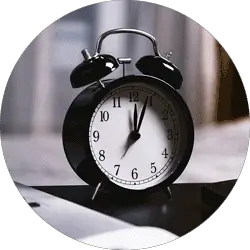
Shift Work Sleep Disorder
Working all night long and trying to sleep during the day can cause serious problems with people’s sleep schedules. Excessive daytime sleepiness, fatigue, and insomnia can all come from working shifts that fit outside of the typical daytime hours of 8am -6pm or so. Circadian rhythms are particularly disturbed when people work a rotating shift, sometimes on nights and sometimes on days. This is actually worse than being able to get used to a set nighttime work schedule. Sleep hygiene training and changing work schedules is usually the only treatment for this sleep disorder.
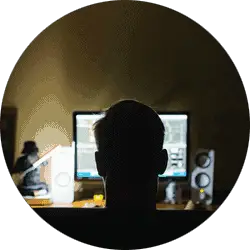
Jet Lag
Named because of the jet planes people travel on that take them to different time zones, Jet Lag most often occurs when someone travels more than two zones time away from their home. Jet Lag is usually more difficult to adjust to when travelling east, because this requires starting the day earlier rather than sleeping in later. This is typically a temporary problem and requires just a few days to adapt to the new environment. Younger people typically adapt more easily than those who are elderly.
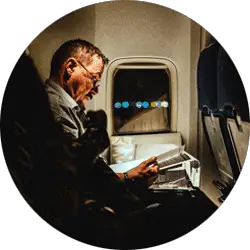
Parasomnias
Some sleep disorders involve strange behavior, movements, or even dreams that occur at various stages throughout sleep. These may be as simple as ordinary nightmares or may result in someone driving a car or eating a meal during sleep!
Sleepwalking
Sometimes called Somnambulism, this behavior disorder results in the person walking or doing other complex activities during sleep. This disorder is commonly found in children and most people grow out of it prior to reaching adulthood. Sleepwalking is more likely to happen in people who are deprived of sleep.
Sleepwalking includes more than walking. It may include sitting up in bed, walking around the house, leaving the house, and even driving for long distances. Experts agree that a sleepwalking person should be awaken in order to promote their safety and the safety of others. Treatment typically includes sleep hygiene, and deprivation of sleep is often a trigger. Avoiding alcohol, caffeine, and other stimulants, as well as certain medications should help with sleepwalking.
Confusional Arousals
Combing sleepwalking with other abnormal activities, confusional arousal causes a sleeping person to present themselves as if they are awake, but they are not. There may be the appearance that the person is not aware of where they are and what they are doing. Typically, confusional arousal episodes affect children and last between five and fifteen minutes, although rarely they can go up to an hour in some youth.
Symptoms may include:
- Slow or slurred speech
- Poor memory
- Confused thinking
- Foggy state of mind
- Teeth grinding
- Rarely, hostile or aggressive behavior
No particular treatment for confusional arousals exists, but most children outgrow them. However, adequate amounts of sleep and proper sleep hygiene are critical for helping avoid stress that might trigger such episodes.

Night Terrors
While most people have had a nightmare at one time or another, night terrors are different in that the person is partially aroused from sleep. A person having a night terror may shout, kick, scream, or thrash in a state of panic. People who are having night terrors may be sitting upright with their eyes wide open, but they are not awake. They may even stand or sleepwalk during night terror episodes.
During a night terror, the affected person is unable to be consoled as they seem to be trying to protect themselves or escape from injury. Familiar people are usually unrecognizable and the person is typically unable to actually communicate in a sensible manner. Once the night terror is over, the person usually goes right back to sleep and does not remember it the next day.
Sleep terrors typically last between 10 and 30 minutes and normally only occur one time per night. Frequency of sleep terrors is around 1-2 times per month in average cases, or 1 time per week in severe cases. Sleep terrors normally occur during childhood and stop some time during adolescence. There is very little evidence that night terrors have any long-term psychological effects on children or adolescents.
Treatment for night terrors in children is typically unwarranted because the children usually grow out of it. Simply keeping the child safe during the terrors is the main goal—for instance placing a gate on stairs and locking bedroom windows.
Adults who have night terrors are much less common and should seek medical treatment as this may be a symptom further neurological, medical, or psychiatric problems. Adults who have sleep terrors may try to leave the house and could cause harm to themselves or others, so the problem should be addressed as soon as it is discovered.
Sleep-Related Eating Disorder
Different than sleepwalking but sometimes occurring in conjunction with it, nocturnal sleep related eating disorder (NS-RED) is just what it sounds like. People who eat while they are asleep at night without remembering anything about it. They may walk into the kitchen, prepare food, and eat it all without any recollection.
Without treatment, this can obviously result in weight gain as well as an increase in the development of diabetes. Symptoms include having little desire to eat breakfast, eating over half of the person’s daily calories after dinner time, and waking up regularly and being unable to fall back to sleep without eating.
Sleep related eating disorders are more common in women, particularly people who diet during the day which can leave them hungry when they are sleeping. Treatment may include a sleep study in a sleep lab, cognitive behavioral therapy for those who also suffer from stress and anxiety, as well as sleep hygiene training. Sleeping pills are typically avoided as they can increase nighttime confusion and even contribute to injuries.
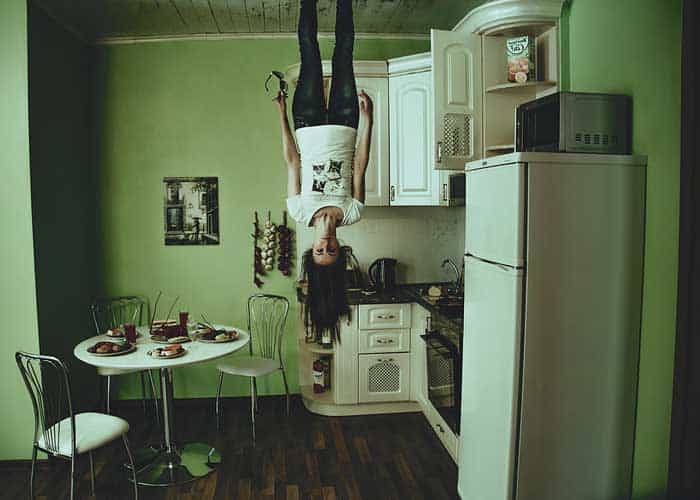
Recurrent Isolated Sleep Paralysis
In this disorder, people often wake from a nightmare only to discover that they cannot move. Many people report that it feels like a “force” is pinning them down. The body may feel numb or as if it has a bit of a tingling feeling. Episodes typically happen as the person is falling asleep or as they are waking up. May people first experience this parasomnia as teenagers but it moves into adulthood as well.
Some causes of Sleep Paralysis have been narrowed down, including:
- Overuse of stimulants such as caffeine, nicotine, etc.
- Mental conditions including stress, anxiety, or bipolar disorder.
- Extreme fatigue.
- Insomnia and sleep deprivation.
- Sleeping on the back.
- Use of medications (particularly for those with ADHD)
- Other underlying conditions such as narcolepsy.
Treatment for sleep paralysis starts with treating underlying mental and physical health conditions. Poor sleeping habits often contribute to sleep paralysis, which means that good sleep hygiene is critically important.
Nightmare Disorder
Although it is common for almost anyone to have a nightmare every so often, some people have them much too often. When this happens, insomnia and daytime sleepiness can occur, interrupting lives. This may require attention from a sleep professional. Treatment may include addressing underlying stress and anxiety, as well as proper sleep hygiene training.
Exploding Head Syndrome
Although this sounds like science fiction, it’s an actual sleep disorder. People who suffer from this syndrome experience hallucinations in which they hear loud sounds such as guns, doors slamming, shouting, clashing symbols, or explosions. Hallucinations of bright flashing lights may also come along with the sounds.
This experience usually happens as a person is just beginning to fall asleep, or within a short amount of time after falling asleep. While there is no actual physical pain or headache related to Exploding Head Syndrome, the panic and anxiety experienced may produce sleeplessness and fear of sleeping which can eventually result in insomnia.
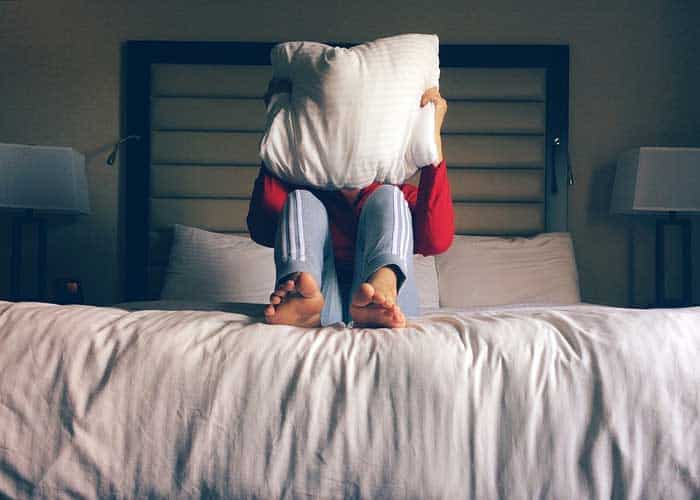
Sleep Enuresis
When children are first potty-trained, wetting the bed during sleep is not uncommon. However, adult bed wetting can be cause for alarm. Some bedwetting can be clearly traced back to a physical health problem such as urinary tract infection, kidney disease, or bladder conditions.
Some bedwetting can be caused by other underlying sleep disorders such as sleep apnea. Treatment requires determining the cause of sleep enuresis as well as including some lifestyle changes. Limiting the amount of fluid intake in the evening may help, as well as cutting out caffeine and alcohol. Sometimes medication is prescribed in order to treat underlying medical conditions.
Sleep-Related Movement Disorders
While the typical person remains fairly motionless during sleep, some people move their arms, legs, jaws, or other body parts during sleep—often without being aware of it. From restless legs to grinding teeth, sleep related movement disorders can cause a great deal of difficulty when they go on for a long time and interrupt a good night’s sleep.
Restless Leg Syndrome
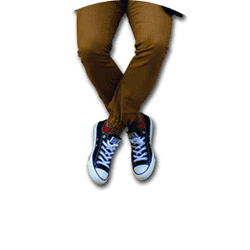
Sometimes referred to as RLS, Restless Leg Syndrome is a disorder of the brain that causes a person to feel the need to move their legs. This typically comes along with an unpleasant sensation that is tingly or even painful. Most forms of RLS happen late in the night, although some might occur during times of sedentary relaxation or rest while the person is still awake. Massaging, moving, or applying pressure to the legs typically provides temporary relief of discomfort
RLS is categorized as a sleep disorder because it results in poor quality of sleep, daytime fatigue, and excessive sleepiness. Decreased quality of life is reported by many RLS sufferers who struggle to maintain performance at work or at school. Although more common in adults, children may also experience restless leg syndrome symptoms.
Although it almost always affects the legs, some people have reported symptoms similar to RLS happening on the torso, arms, and even the head.
Restless leg syndrome may be a secondary problem caused by underlying conditions including: kidney failure, iron deficiency, diabetes, Parkinson’s disease, or peripheral neuropathy. Pregnancy, alcohol and tobacco use, and varicose veins seem to trigger or exacerbate symptoms of RLS. Certain medications may also cause RLS, such as antidepressants, antipsychotic drugs, anti-nausea drugs, or cold and allergy medications.
Restless Leg Syndrome is usually treated through lifestyle changes, or may be treated with medication depending on the cause. Negative side effects of medications such as narcotics, however, may outweigh the relief gained so many patients prefer natural treatment options.
Periodic Limb Movement (PLMD)
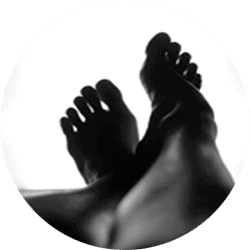
Similar to restless leg syndrome, this movement of limbs (often legs) happens involuntarily during sleep. Twitching, jerking, spasms, or involuntary flexing of the legs or arms typically lasts for just a couple of seconds at a time and recurs in clusters every minute or so. This can last for only a few minutes or up to several hours at night during non-REM sleep.
People who have PLMD often display excessive sleepiness during the day, restless leg syndrome, and chronic insomnia. No one knows exactly what causes PLMD but some underlying issues may be related. Caffeine use, spinal cord injury, drug dependency, iron deficiency, sleep apnea, narcolepsy, and Parkinson’s disease have all been connected to this condition.
Treatment for Periodic Limb Movement Disorder may be unnecessary unless it causes interruptions for daily life. Treating underlying disorders may help. Medications used to treat PLMD include anticonvulsants, benzodiazepines, or narcotics to increase the ability to sleep well. Avoiding alcohol, nicotine, caffeine, and antidepressants may be helpful as well.
Sleep Related Bruxism
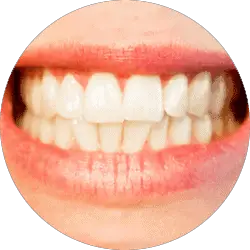
Bruxism is simply a fancy word for teeth-grinding. As with many sleeping conditions, people who grind their teeth during sleep are often completely unaware of it. Unless a sleeping partner tells you it is happening, it’s difficult to know. Your dentist may also see signs that you are grinding your teeth in your sleep.
Symptoms of bruxism include:
- Waking up with a dull headache beginning in the temples
- Soreness in the jaw, neck, or face
- Teeth that feel loose, flattened, chipped, or broken
- Tooth enamel that is worn down and exposes underneath layers of teeth
- Tooth sensitivity or pain
- Pain that is similar to an earache
- Teeth clenching or grinding that disturbs a sleeping partner
- Related sleeping disorders such as snoring or sleep apnea
- Sleep disruption, daytime sleepiness and fatigue
Bruxism has a couple of different causes. Some people begin grinding their teeth at night because of sleep related arousals in which muscle activity increases. This type of arousal is especially related to people with other sleep disorders such as sleep apnea. In these cases, bruxism in the sleep may be a physiological response to the body’s inability to breathe during sleep.
Many people who have sleep related bruxism struggle with mental disorders such as anxiety, stress, depression, or other emotions that cause tension in the muscles. In fact, studies have shown that up to 70% of bruxism cases may be related to anxiety or stress.
The first step in treating bruxism may be having a sleep study so that the exact cause can be determined. If stress is the trigger, then therapy and stress medications may help relieve teeth grinding. Talking to your dentist about bruxism is important so that you can make sure your dental health is not damaged. Dental appliances can also be fitted to help keep you from grinding your teeth during sleep.
Sleep Disorders Conclusion
So many aspects of life can disrupt our ability to sleep well and feel rested the next day. But the good news is that many sleep related disorders can be solved through natural steps such as education on sleep hygiene, changes in eating habits, losing weight, and changing sleep routines. Some help may also be available through certain products such as light therapy boxes, room-darkening blinds, or even certain types of pillows that help with sleep.
Restoring your body to proper sleeping status can change almost everything for you, regaining energy, physical health, and even brain function. So take proper steps today to get the sleep you need in order to live your life to the fullest!

Pingback: Benefits of Sleep: How A Good Night's Sleep Helps Workout Recovery